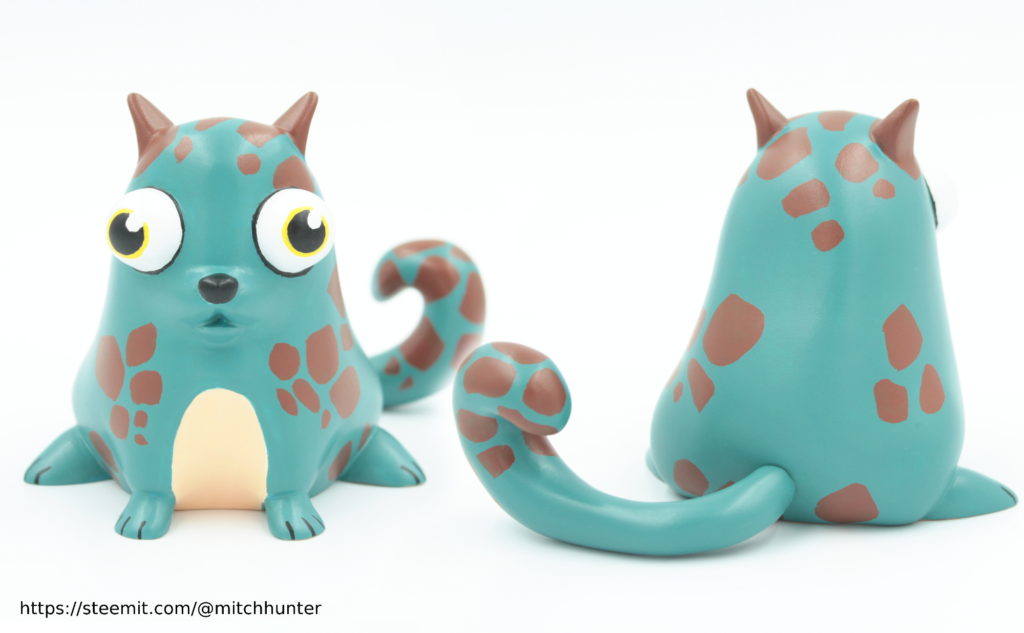Econ One-oh-What?

Real world sculpted CryptoKitties. Photo: Michal, Creative Commons, some rights reserved. Michal makes and distributes these on a social media platform which pays for blogging with yet another cryprocurrency called Steem.
I’ve always had this sneaking suspicion that I don’t really understand money. Barter, that I get. Here’s a bear steak. I’ll swap it for your chicken. Simple. I even get gold. Oooh! It’s shiny. But I’ve never quite grasped how printing a president’s picture on a piece of rag paper turns it into something of value, and by picking a different president, you give it more value.
I must not be the only one, because when I was a kid, much U.S. folding money was still labeled as “Silver Certificate,” indicating that if you gave it to the government, they promised to give you some shiny metal. But I have no idea what a “Federal Reserve Note,” is aside from “Legal Tender for all Debts Public and Private.”
I’m even more confused by direct deposit and debit. I never see a paycheck anymore. All my money goes straight to the bank, somehow, even though I can’t go look at it in the vault. They give me a piece of plastic. I go to stores and wave it around and they give me the stuff I need. I don’t know what I would do if they ever stopped, but so far, thankfully, they haven’t.
Realizing there must be something I’m just not getting, I try listening to NPR’s Planet Money and The Indicator podcast. But somehow it doesn’t help. Yesterday’s edition of The Indicator was about CryptoKitties, which is a kind of cryptocurrency you buy with another cryptocurrency called Ethereum. But unlike Ethereum and most other cryptos, where each unit has the same value (fluctuating from day to day), each CryptoKitty has a unique value, determined by the desirability (cuteness I imagine) of the digital drawing of the cat within. I think you lost me back at “bear steak.”
And not only do the ‘Kitties have real world value, you can “breed” (I don’t want to think how) the most valuable ones and sell their offspring. But at least that gets me to a point I do understand. There’s that scene in “It’s A Wonderful Life” where James Stewart is left with two one-dollar bills on hand after the run on his savings bank. He puts them into the vault in the hope that they will breed. And through the magic of Hollywood, it all works out.
Tags: economy, listeningpost








Think of money as a symbol of gratitude. Your employer is grateful for the services you provide but they don’t have bear steaks or chickens to give you in return so they give symbolic gratitude in the form of money. It is worth whatever we mutually agree is its value just like agreeing that a bear steak is worth one chicken.
Throughout history, there have been attempts to make money have intrinsic value, first by making it from gold and silver or paper ‘backed by’ gold and silver that was kept is a vault somewhere (think Fort Knox) but in reality, even gold and silver are only valuable because we mutually agree they are. If beach sand was gold and silver granules we would not value it so highly. We’d just have some very shiny beaches.
What we need to multiply is not dollar bills a’ la the Bailey Savings and loan, CryptoKitties or any other symbolism. We need to multiply gratitude and the symbolic currency will follow suit without any further effort on our part. Anything else is mere manipulation for the benefit of one person at the expense of others.
The sneaking suspicion we all have stems from the information void left gaping in Econ one-oh-what.
For example, Planet Money is always interesting and entertaining, but doesn’t help get to the very bottom of what our money is, and why that matters. My understanding so far, is this:
We are using a debt-based, interest-bearing, privately owned money system (called the Federal Reserve). It would be more correct to say that this type of money system is using us.
Want listening that is more deep-digging when it comes to understanding “our” money system? One of the best radio interviews I’ve ever heard is with Bernard Lietaer and Jacqui Dunne on TTBOOK. Buried deep within the interview they list the pervasive negative consequences of the money system we have now. They explain why the present money system is unjust and unstable, and that money systems can be intentionally designed, to have consequences we do want.
http://archive.ttbook.org/listen/68306
Also, author Ellen Brown has a great podcast, It’s Our Money. This is not to mention her excellent book (Web of Debt) and website.
https://itsourmoney.podbean.com/
Positive Money is doing some amazing explanatory journalism in their videos. Even though they are in the UK, they help us understand money systems as they work here as well. My favorites are by Fran Boait:
http://positivemoney.org/videos/presentations-by-positive-money/
So I was following you at least up to the Kryptokitties, which probably lost us all. Hope this helps.
Jeff-Lewis-St. Lawrence Progressives group is planning a series of 2-3 presentations (Watertown and Potsdam/Canton) on Modern Monetary Theory (MMT) that may be of interest, Dale! Hope to see you there! Events are in planning stages but will be held in October. There will be Facebook Event pages, you can Like the notification post made today on this page for notification: https://www.facebook.com/jefflewisstlprogs/